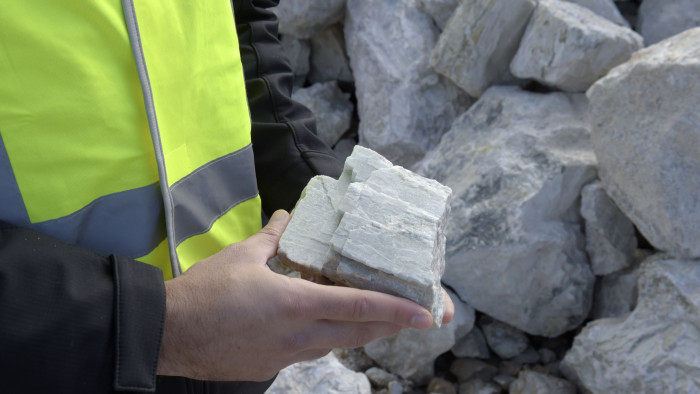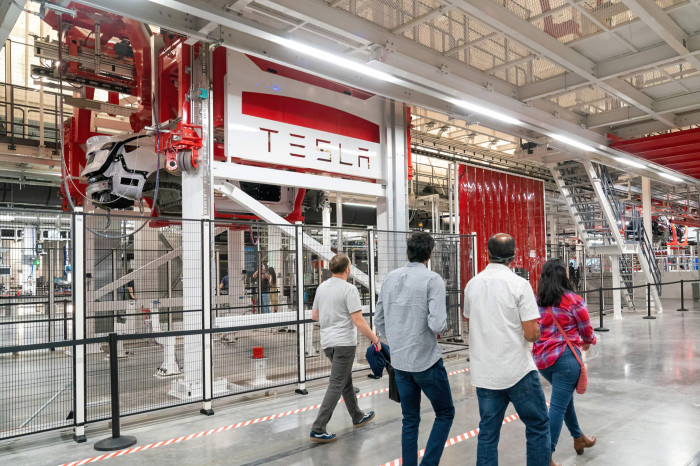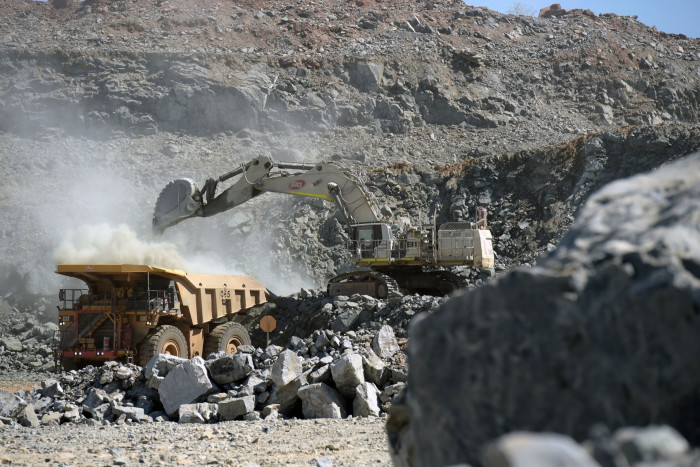Carmakers take control of supply sourcing as battery costs rise

Roula Khalaf, Editor of the FT, selects her favourite stories in this weekly newsletter.
For the first time in more than a decade, the cost of an electric car battery is set to rise this year. Soaring prices for battery raw materials — such as lithium, cobalt and nickel — have led commodities research provider BloombergNEF to predict the reversal of a long-held trend towards cheaper cells, which had seen costs come down from $1,220 per kilowatt-hour in 2010 to $132 per KWH last year.
But a return to more expensive batteries, alongside a supply chain squeeze, calls into question how quickly electric vehicles can become affordable mass-market products — at a time when transport still accounts for a quarter of the carbon dioxide emissions that are a driver of global warming.
Industry analysts forecast that carmakers will experience prolonged production disruptions, akin to those caused by semiconductor shortages over the past two years.
So, faced with constraints on their ability to acquire raw materials, automotive companies are planning to take over the buying of vital inputs themselves, rather than leaving it to a vast base of suppliers.
“Carmakers are worried about critical mineral access,” explains Jon Hykawy, president of research firm Stormcrow Capital. He argues that taking the lead on raw material sourcing is the only option they have.
Tesla was the first carmaker to venture down this path at its landmark Battery Day in 2020, with founder Elon Musk saying the company would intervene directly, where necessary, to supplement the supply of battery materials.

Public evidence of Tesla moving up the supply chain has so far been relatively muted. But filings last month showed the EV maker has applied for tax breaks to build a potential lithium refinery in Texas or Louisiana.
Such a move is seen by many industry observers as necessary to achieve Tesla’s ambition of 20mn electric car sales by 2030.
It comes with great risk, though. Lithium refining — a complex chemical process — is a far cry from the carmaker’s core expertise of designing vehicles, and relies on the company being able to secure a type of lithium ore known as “spodumene”.
More stories from this report
‘Loss and damage’ debate set to dominate the COP27 agenda
US needs yet more ‘huge lift’ to hit Paris goals
Australia takes steps to catch up on climate action
European crisis risks climate action reputation
UK’s green hydrogen ambitions fail to deliver
Fusion edges from fantasy to reality
Appetite for charcoal threats ‘Lungs of Africa’
Tide goes out on UN high seas treaty
Here, availability and cost problems can be serious. Prices of lithium hydroxide, the refined product, have skyrocketed to more than eight times the level of the start of 2021 at almost $70,000 per tonne, close to the record highs hit in March, according to Benchmark Mineral Intelligence.
But, despite the high prices, capital flows into lithium are still meagre relative to the expected soaring demand, says Sam Jaffe, vice-president of battery storage solutions at E Source.
As a result, his consultancy revised up its medium-term forecast for battery costs to $138 per kilowatt-hour in 2024 — the same level as last year. A cost of $100 per KWH has long been viewed as the level that will make electric cars affordable.
Tesla is the industry frontrunner in securing battery raw materials but some incumbent automakers, frustrated by supply chain disruption, have recently stepped up their own efforts to secure resources by going directly to producers.
General Motors agreed to pre-pay Livent, a lithium mining group, $200mn to secure supplies, while Ford said it would stump up financing for Liontown Resources to develop a lithium mine. Stellantis has even taken a €50mn equity stake in Vulcan Energy Resources, which aims to produce lithium in Germany.
“What we’ve seen, where car manufacturers have been dabbling in the supply chain, is the very beginning stages of what is going to happen,” says Jaffe.
While some see these moves as a much-needed shift in strategy, others say certain deals smack of panic. “It tells you how desperate they are for lithium units — they are willing to do deals with companies that have no production,” says Chris Berry, president of Mountain House Partners, a consultancy.

However, Lukasz Bednarski, principal research analyst at S&P Global Commodity Insights, suggests the doom mongering is overblown.
“The fact that the market is tight is a good enough reason for the automakers to look at their supply chains. Before, they had the mindset: ‘we buy batteries but let’s leave buying the battery materials to the battery manufacturers’. That is changing slowly.”
However, he adds: “It’s still not common for automakers to go out and buy the lithium mine. I don’t think such a trend will really take place because that would be very unusual.”
Higher prices come as western governments commit to industrial policies that will influence where carmakers source their raw materials, by introducing limits and incentives.
“I don’t think it’s just the pricing environment,” says Yayoi Sekine, head of energy storage at BloombergNEF. “The geopolitical environment has created a lot more questions around securing the supply chain.”
US President Joe Biden’s Inflation Reduction Act includes tax credits for EVs with a certain percentage of raw materials sourced from the US, or free trade partners, or recycling. This has left automakers and battery cell manufacturers scrambling to rework their supply strategies.
The US legislation also prevents vehicles from accessing those credits if any of the critical materials are extracted, processed or recycled by a “foreign entity of concern”.
Berry believes economic and geopolitical changes — which also include soaring energy costs because of the Russia-Ukraine conflict and rising interest rates — could turn what would have been a blip in battery prices into something more lasting.
“The entire investment thesis rests on batteries getting cheaper and cheaper every year and getting more energy dense,” he says. “Here we are, for the first time ever, where battery pricing has stagnated.”
“Given so much change across the battery supply chain . . . industry has to turn on a dime — and that means some of these cost pressures could be structural.”
Comments